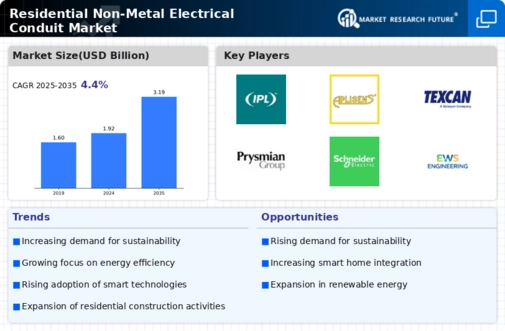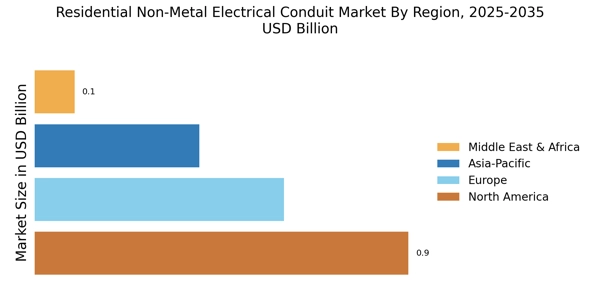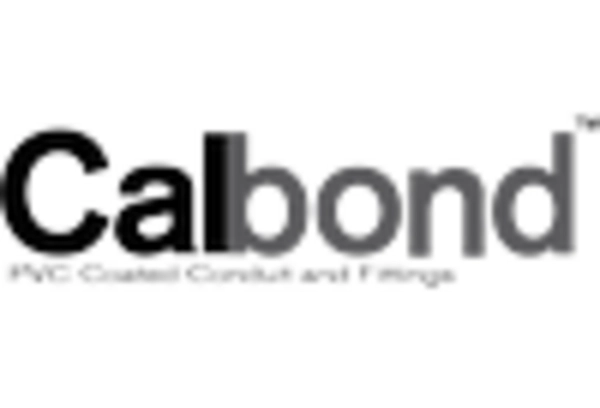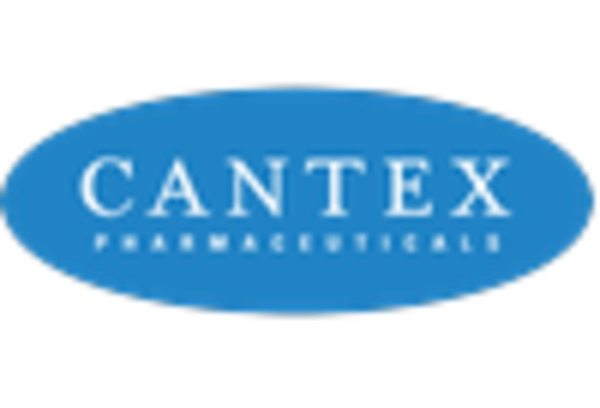Increased Demand for Sustainable Solutions
The Residential Non-Metal Electrical Conduit Market is experiencing a notable shift towards sustainable building practices. As consumers and builders alike become more environmentally conscious, the demand for non-metal conduits, which are often made from recyclable materials, is on the rise. This trend is further supported by various government initiatives promoting green construction. In fact, the market for non-metal conduits is projected to grow at a compound annual growth rate of approximately 5.2% over the next five years. This growth is indicative of a broader movement towards sustainability in residential construction, where the use of eco-friendly materials is becoming a standard rather than an exception.
Regulatory Compliance and Safety Standards
The Residential Non-Metal Electrical Conduit Market is significantly influenced by stringent regulatory compliance and safety standards. Governments and regulatory bodies are increasingly mandating the use of non-metal conduits in residential applications due to their inherent safety features, such as resistance to corrosion and lower fire hazards. These regulations not only enhance safety but also promote the adoption of non-metal conduits in new residential projects. As a result, manufacturers are focusing on developing products that meet these evolving standards, which is likely to drive market growth. The emphasis on safety and compliance is expected to contribute to a steady increase in demand for non-metal conduits in the residential sector.
Rising Popularity of Smart Home Technologies
The Residential Non-Metal Electrical Conduit Market is increasingly intertwined with the rising popularity of smart home technologies. As homeowners seek to integrate advanced electrical systems into their residences, the demand for reliable and efficient conduit solutions is growing. Non-metal conduits are particularly well-suited for housing the wiring and connections necessary for smart devices, as they provide flexibility and ease of installation. This trend is likely to drive the market forward, as more consumers invest in smart home solutions. The intersection of smart technology and residential construction is expected to create new opportunities for non-metal conduit manufacturers, further solidifying their role in modern homes.
Growth in Residential Construction Activities
The Residential Non-Metal Electrical Conduit Market is poised for growth due to an uptick in residential construction activities. As urbanization continues to expand, there is a corresponding increase in the demand for new housing developments. This surge in construction is likely to drive the need for efficient electrical systems, where non-metal conduits play a vital role. According to recent data, residential construction spending has seen a steady increase, suggesting a robust market environment for non-metal conduits. As builders prioritize cost-effective and safe electrical solutions, the demand for non-metal conduits is expected to rise, contributing to the overall growth of the market.
Technological Innovations in Material Science
The Residential Non-Metal Electrical Conduit Market is benefiting from advancements in material science that enhance the performance and durability of non-metal conduits. Innovations such as the development of high-density polyethylene and other composite materials are making these conduits more robust and versatile. These materials not only offer improved resistance to environmental factors but also reduce installation costs due to their lightweight nature. As technology continues to evolve, manufacturers are likely to introduce new products that cater to the specific needs of residential construction, thereby expanding the market. The integration of these advanced materials is expected to play a crucial role in shaping the future of the non-metal conduit market.


















Leave a Comment